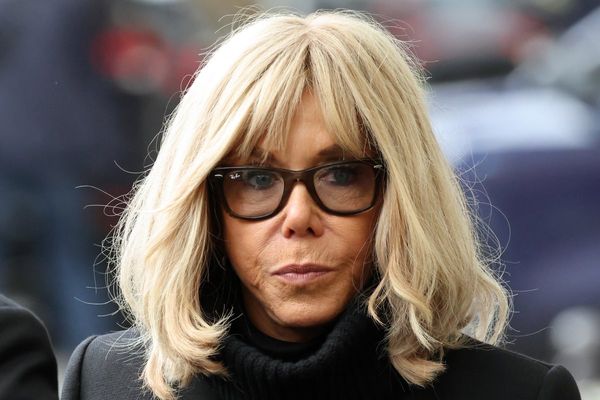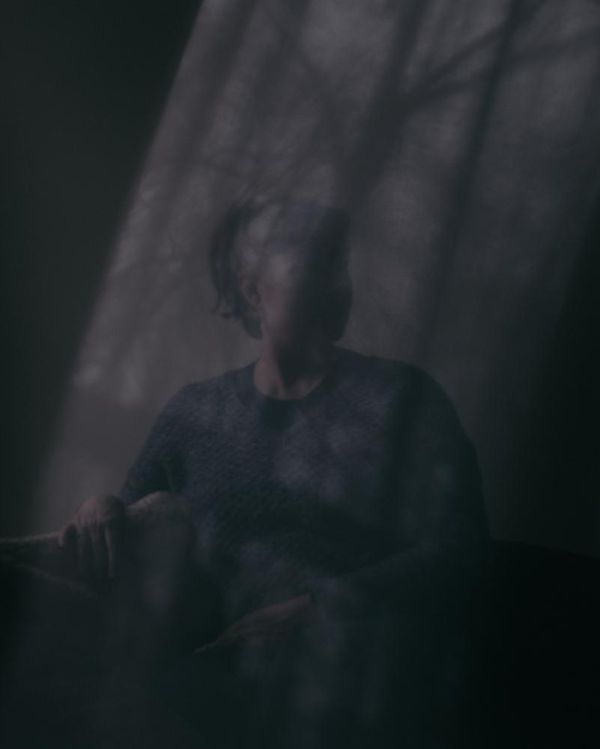
Curator Hetti Perkins once described Judy Watson’s work as a “tender trap”, for its “seductive beauty” and ability to transmit powerful, often painful messages. This is in full evidence at Queensland Art Gallery (QAG), which is showcasing four decades of practice across more than 120 works by the Mundubbera-born, Meeanjin/Magandjin/Brisbane-based artist. It is the most expansive survey of Watson’s work to date.
Even the exhibition’s title, mudunama kundana wandaraba jarribirri, has a poetic beauty that belies its bite: in the language of Watsons’ Waanyi ancestors, it translates as “tomorrow the tree grows stronger”. The line is taken from a poem by her son, Otis Carmichael: “now the tree is cut. tomorrow the tree grows stronger, fighting the axe that cut it. our people bite back.”
Visitors’ first encounter with the exhibition is a striking installation just past the gallery’s entrance: a curving red gash, like a smile, painted on a white floor plinth, with a heavy pour of white salt down its centre. At the back, forming a kind of hanging windbreak, are thickets of cut branches. The afternoon before the opening, visitors keep pausing to admire the arrangement.
Titled salt in the wound, it alludes to an episode in which Watson’s great-great-grandmother Rosie escaped a massacre of Waanyi by the Native Police at Lawn Hill Station in north-west Queensland when she was a young woman – a story passed down matrilineally, until Watson heard it from her grandmother Grace.
The gash, painted in red ochre, represents the bayonet wound Rosie received while hiding in a windbreak with another girl. The two rolled down the hill and hid in a waterway, submerging themselves fully by putting rocks on their bellies and using hollow reeds as breathing tubes.
Rosie carried the bayonet wound the rest of her life, and Watson has said the ochre gash in her installation “is the open wound with the salt in it, which comes down through generations. A trans-generational trauma throughout history and our families.”
Previous presentations of the work have incorporated an installation of 40 pairs of wax-cast ears, nailed to the gallery wall – a grisly reminder of documented colonial violence in the same location. At QAG, this installation is tucked away within the main gallery space, a truth bomb ready to detonate as the viewer rounds the corner.
On the wall behind salt in the wound, scores of small bronze-cast stones are arranged in the shape of the continent. The stones were originally shown – in a different configuration – as part of the landmark Australian exhibition for the 1997 Venice Biennale. At QAG, the stones form a “partial massacre map” documenting sites at which Australia’s First Peoples were massacred by colonists. “Not all of them, because I didn’t have enough bronze stones,” says Watson. A list of sites can be found in Watson’s 2016 video the names of places, also part of the exhibition.
Watson is relaxed and unfussy when talking about her work, and regularly namechecks other artists who have contributed to various pieces, as collaborators or studio assistants, and praises the installation team. She points out a slick of water on the ochre in salt in the wound, and marvels: “I’ve never had this happen before; this time, the salt started weeping.” Somehow, magnesium salt has contaminated the regular salt generally used for the work – but she seems pleased.
“I might use it again – it adds another element to it,” she says. “As an artist you control certain things and there’s other things you can’t control. And that’s what I love.”
There’s something of the alchemist in Watson, who came to art via printmaking in the late 1970s, at the Darling Downs Institute of Advanced Education in Toowoomba, and studied lithography (a method of printmaking reliant on chemistry) at University of Tasmania, then Monash University in Gippsland, Victoria. The canvases for which she is perhaps best known owe much of their colour, texture and patterning to chemical reactions – planned and unplanned.
Watson often uses indigo (which she fell in love with during a residency in Italy) and shibori, a technique involving the folding and tying of fabric to affect dye patterns, which she picked up from her younger sister, who studied textile production. “I just remember seeing the fabric go into the indigo dye, and as it comes out it turns green, and then it suddenly changes as it oxidises and goes blue,” Watson says. “It often seems to be the things that change that I respond to.”
Lithography profoundly influenced her practice in other ways, too: she puts her love of collaboration down to the atmosphere and process of the printmaking studio, and has described drawing as the source of all of her work. In her 1997 series our hair in your collections, our bones in your collections and our skin in your collections (all featured in the exhibition) she “artistically repatriated” Waanyi items held in the British Museum by tracing their outlines.
Visitors will notice recurrent motifs across Watson’s prints on paper and canvas works, including string and rope, leaves and grasses, spines (of plants, fish or spears), and the shapes of shields, termite mounds and dilly bags – all drawing on Waanyi Country and culture. Likewise, a show-stopping installation in the gallery’s central water mall features a congregation of bronze-cast forms resembling termite mounds, fish traps and upended dilly bags.
Watson says a return trip to her ancestral Country, Boodjamulla (Lawn Hill) Gorge national park, in 1990 with her family, profoundly shaped her art practice: “My uncle Ken Isaacson showed me: down on the ground there were stone tools scattered; in the sides of the gorges was rock engraving and painting. There are important sites all through there. So I’ve made a lot of work [about the idea] of looking at the ground, or learning from the ground up.”
The exhibition, presided over by Katina Davidson (Kullilli/Yuggera), the gallery’s curator of Indigenous Australian art, is organised around four themes that encompass Watson’s key ongoing concerns: identity, the archive, feminism and environmentalism.
In conversation, Watson is unambiguous and emphatic on these topics. In her art, she is more subtle. Her ideas often permeate the viewer’s consciousness slowly: you might be drawn to a work’s beauty or striking aesthetic from afar, and only catch the detail and layers of meaning upon closer examination.
I ask Watson if she has ever been tempted by other forms of advocacy, and she smiles: “There’s lots of other ways to do it. But there’s something about working with the body – channelling it through my body – that feels good, too. And it’s not that people will understand things straight away. But that’s all right. I don’t understand lots of things straight away either … and what I don’t understand I think is most interesting, and takes me on a different journey.”
Judy Watson’s exhibition mudunama kundana wandaraba jarribirri is on at Queensland Art Gallery until 11 August. Admission is free







